Covering more than 2 million square miles in South America, the world's biggest tropical rainforest hides lots of scary secrets—and some beautiful ones too
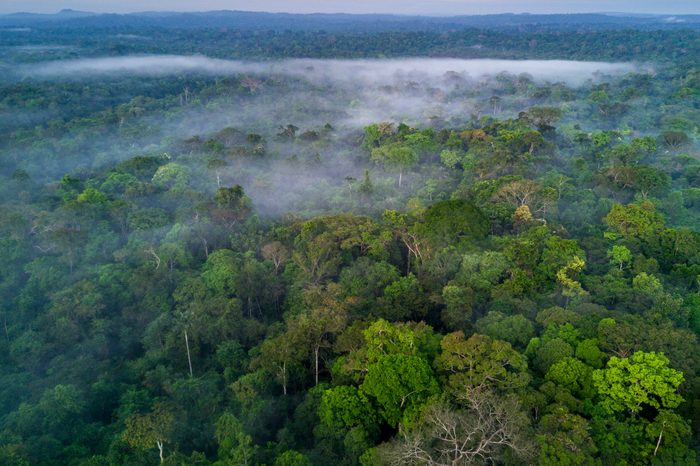
15 Amazing Facts About the Amazon Rainforest

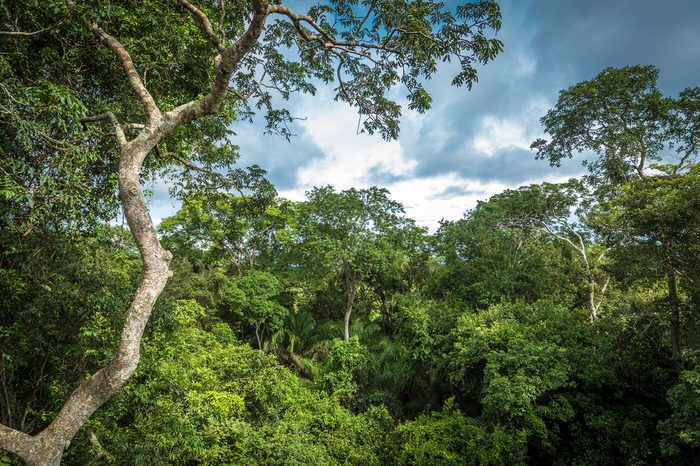
The rainforest has many layers
There are thousands of tree species in the Amazon rainforest, many of which grow to between 80 and 100 feet tall, developing huge networks of branches that make up the canopy layer. A few trees grow even taller and poke up above the canopy, forming the emergent layer—small flying and gliding animals like birds, bats and butterflies are good at maneuvering from tree to tree, up where it’s windy. Below the main tree canopy, the understory layer is darker and stiller. Plants growing there often have extravagant, very fragrant flowers in order to attract pollinators without a lot of light. The forest floor layer is even darker, and few plants grow there.

The tree canopy sees the most action
Widely considered the most active part of the rainforest, the canopy is the 20-or-so-foot-thick layer of treetops that essentially form the roof of the ecosystem, more than 100 feet above the ground. More animals live in the canopy than in any other layer—birds, including macaws and toucans, monkeys, spiders, sloths and thousands of insects that eat the fruits and leaves of trees and sleep in the branches.
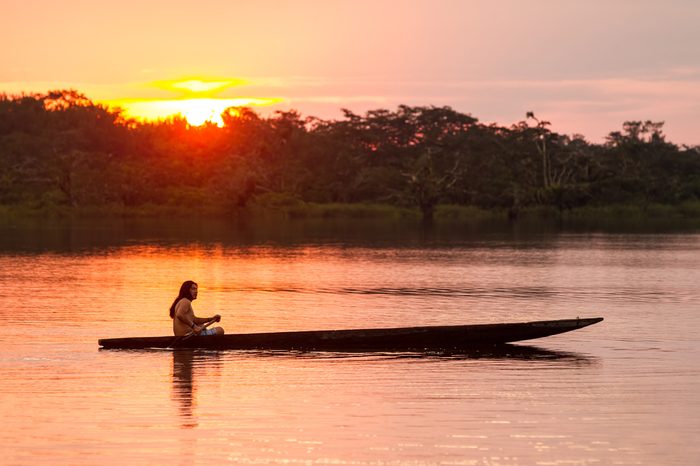
Isolated tribes still exist
More than a million Indigenous people live in the Amazon rainforest. There are more than 400 tribes, most of which have had contact with outsiders for hundreds of years. They hunt, fish and farm, and many have access to Western medicine and education. But a dwindling number of tribal people have remained isolated.
Although they’re often referred to as “uncontacted,” most isolated tribes actually know about outsiders and choose to keep their distance. That’s because most of the contact they’ve had has been extremely destructive: loggers, miners and ranchers have killed and expelled Indigenous people in the region, and isolated tribes still have little immunity to the diseases outsiders can introduce. In July 2018, Brazilian authorities managed to film a man known as the “Indigenous man in the hole,” who is believed to be the sole survivor of a tribe whose other members were killed by farmers in 1995. He has rejected outside visitors, though other Indigenous people leave him seeds and tools.
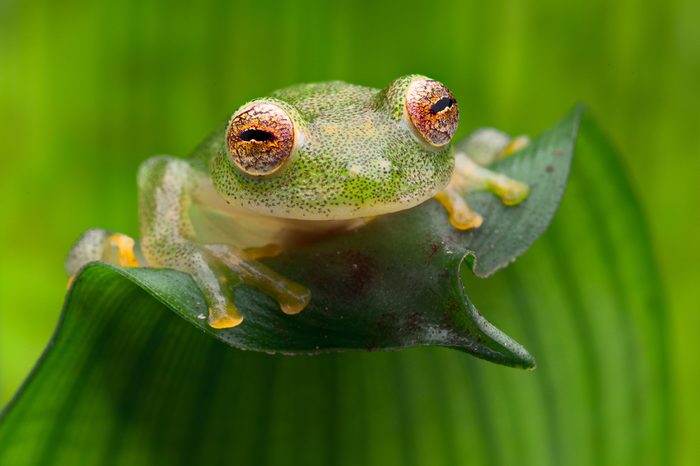
New plants and animals are discovered all the time
A new species of plant or animal was discovered in the Amazon rainforest every three days between 1999 and 2009, according to a World Wildlife Fund report. They included a bald parrot, a tiny blind catfish and a frog with an incredible burst of flames on its head and contrasting patterned legs. In fact, one out of every 10 known species lives in the Amazon.
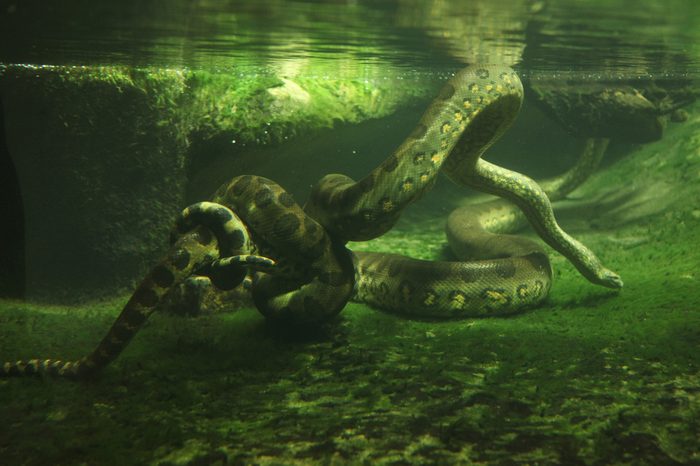
There are terrifyingly large snakes
The biggest snake in the world is the green anaconda, which lives in the Amazon’s swamps, marshes and streams. Growing as long as 30 feet and weighing up to 550 pounds, anacondas beat out their main competition for the title, the reticulated python (native to southern Asia), which can grow slightly longer but tends to be much more slender.
The anaconda spends most of its time in water; its eyes and nasal openings are located on top of its head to allow it to see and breathe while swimming and to watch for prey while almost completely underwater. They catch wild pigs, birds and even jaguars, squeeze them until they suffocate, then swallow their prey whole. Anacondas can go weeks or even months without food after a big kill.
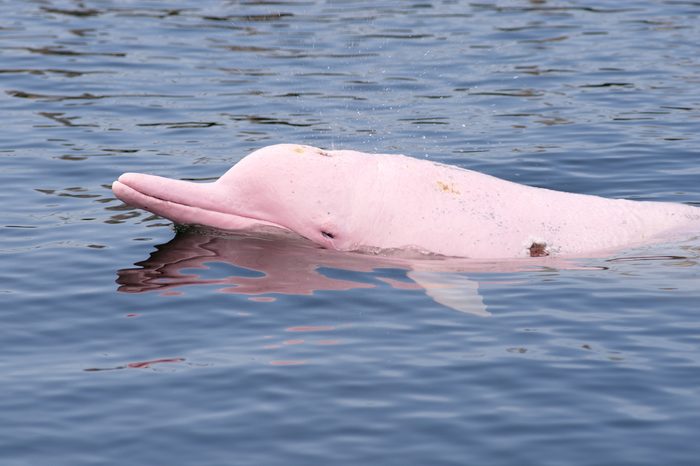
Yes, pink dolphins do exist
Pink dolphins, whose official name is the Amazon river dolphin, can be found throughout the Amazon river basins in Peru, Bolivia, Brazil, Colombia, Ecuador, Guyana and Venezuela. These creatures can only be found in freshwater, and the population is estimated to be in the tens of thousands.

You won’t be eaten by a piranha
According to National Geographic, red-bellied piranhas, found in lakes and rivers throughout South America, including the Amazon, are not man-eaters. It’s extremely rare for these sharp-teeth creatures to go after humans. Instead, these fish travel in groups (there can be up to 100 of them in a school) in order to be efficient hunters. They eat mainly other fish, shrimp, worms and mollusks.

A tarantula bite is similar to a bee sting
These scary-looking spiders may seem like their poison can take down a human, but the reality is that a bite from one is not all that different than a bee sting. They mainly hunt at night and like to dine on insects but are also known to eat frogs and mice. The way they trap and eat their prey, however, is unusual: Tarantulas use their legs to grab their target, then they inject it with paralyzing venom—finally, they bite the prey with their fangs and suck up the bodies through their mouth.
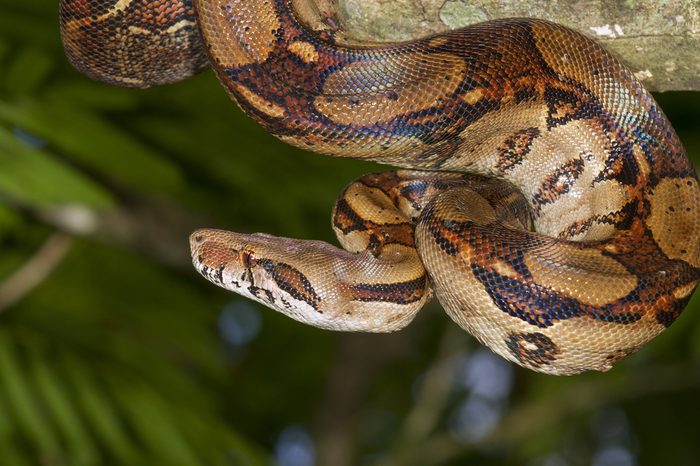
Boa constrictors squeeze their prey to death
While boas are often made out to be the villain, these slithering snakes don’t actually break the bones of their prey by crushing them. Instead, they wrap their body around their target and squeeze, cutting off the victim’s blood flow to their heart and brain, which causes rapid unconsciousness and then death. But don’t worry, they usually hide in the trees of the Amazon, where they hunt for rodents, birds, lizards, frogs and monkeys.
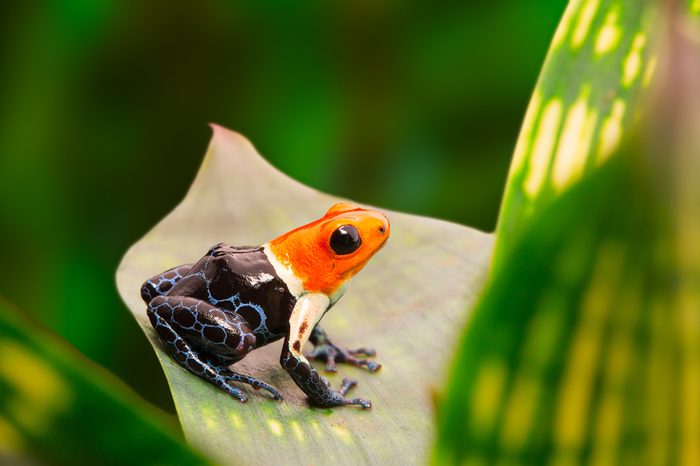
Poison dart frogs are brightly colored for a reason
While most animals camouflage themselves to blend into their surroundings, the poison dart frog is brightly colored to warn off would-be predators. Their bright hues—ranging from blue and red to yellow and green—make these tiny creatures a sought-after sight in the Amazon. But don’t be fooled by the frog’s beauty: Their skin secretes a poison that can paralyze, and in some cases kill, their prey.
Of the more than 100 species of poison dart frogs, many are considered threatened or endangered by climate change and a shrinking habitat.
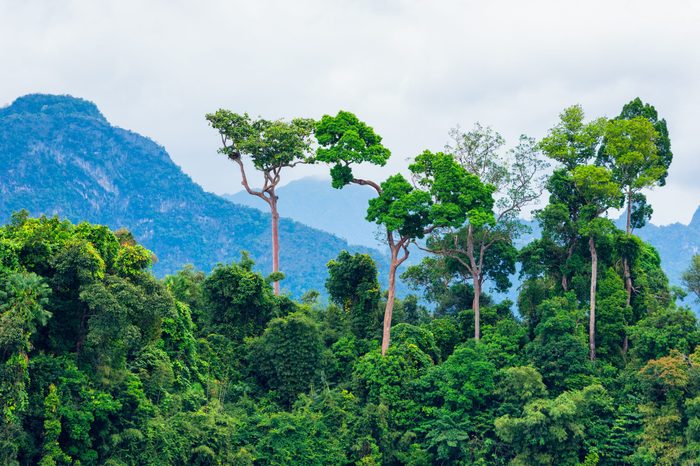
The Amazon’s name has a link to Greek mythology
The Amazon region got its name from a Spanish soldier named Francisco de Orellana. In 1541, de Orellana was the first European to explore the area, and he reached the mouth of the river in 1542, according to Britannica. He returned to Spain with tales of the gold and cinnamon he found there.
He was said to have battled a tribe where women fought alongside their tribesmen, who were protecting their territory. They were so fierce he called them Amazons, a reference to female warriors in Greek mythology, and the name stuck.
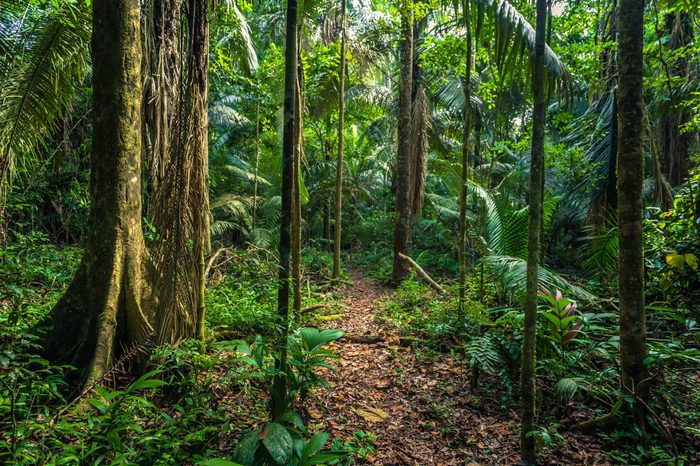
The rainforest is shrinking
The Amazon has lost around 17% of its rainforest over the past five decades, according to the World Wildlife Fund. Converting the forest into land to raise cattle is a primary reason for the decline in the rainforest. Deforestation is more common in areas where more people live, but it’s also on the rise in more remote areas after the discovery of natural resources such as gold and oil.

There’s been a rise in forest fires
Residents of the Brazilian city of São Paulo have been breathing in black smoke due to widespread wildfires in the Amazon region. In 2024, forest fires were up 80% from the year before, making the situation worse, according to the nonprofit Amazon Watch. Why? Intensifying climate change is causing more frequent droughts, which dry out the forest, leading to deeper and more widespread fires.

A man actually swam the Amazon River
Sure, the prospects of piranhas and parasites were intimidating, but it didn’t stop a Slovenian man from becoming the first person to swim the entire length of the Amazon River in 2007, Time reported. It took Martin Strel 66 days to accomplish the nearly 3,300-mile journey. He was 52 at the time, and his diet included daily consumption of Slovenian wine.

A humpback whale wound up in the Amazon River
Scientists were baffled in February 2019 when a dead humpback whale was discovered near the mouth of the Amazon River. The whales typically migrate back and forth between the poles, according to the New York Times. But this whale was about 4,000 miles from its expected feeding grounds. The scientists hypothesized that the whale may have gotten lost during breeding season and never made it to the feeding grounds. Another theory is that the whale may have died because it swallowed marine plastics before its body washed up inland.
Why trust us
At Reader’s Digest, we’re committed to producing high-quality content by writers with expertise and experience in their field in consultation with relevant, qualified experts. We rely on reputable primary sources, including government and professional organizations and academic institutions as well as our writers’ personal experiences where appropriate. We verify all facts and data, back them with credible sourcing and revisit them over time to ensure they remain accurate and up to date. Read more about our team, our contributors and our editorial policies.
Sources:
- World Wildlife Fund
- National Geographic
- Britannica
- WWF-UK: “WWF-UK”
- PBS: “Wild and Wonderful Trees of the Amazon Rainforest”
- New York Times: “Humpback Whale Washes Ashore in Amazon River, Baffling Scientists in Brazil”
- Reuters: “Swimmer’s life at risk after record Amazon trip”
- Survival International: “Uncontacted tribes: the threats”
- San Diego Zoo: “Boa”
- Sacramento Zoo: “Poison dart frog”
- National Park Service: “Tarantulas at Pinnacles National Park”
- Zoo Atlanta: “Reticulated python”
- Smithsonian Institute: “Rainforests”




















